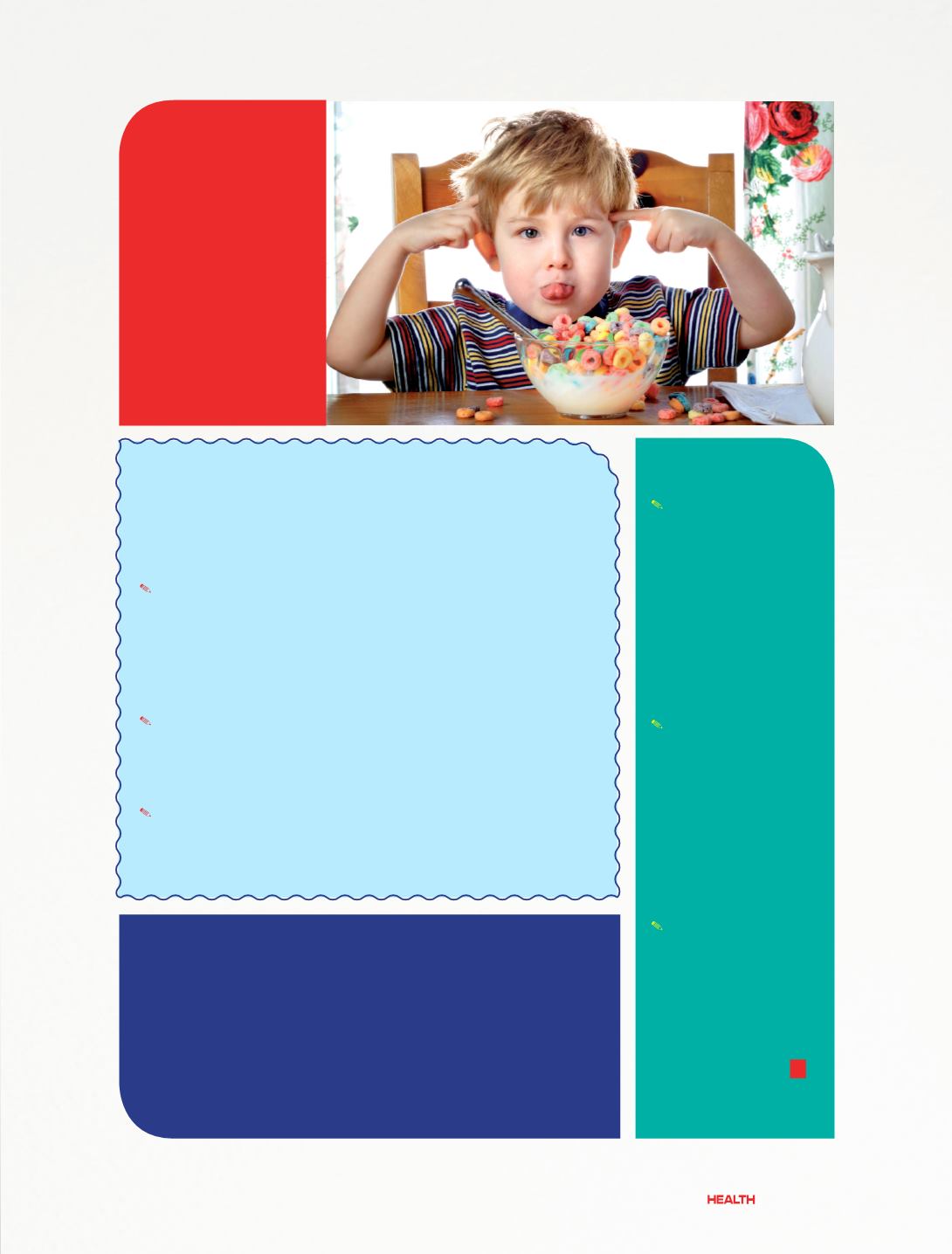

Diagnosis
There is no simple test to diagnose ADHD, tell Dr. Sharih. “In addition,
many of the symptoms of ADHD are common among four to six-year-
old children, but tend to occur with less frequency and/or intensity than
in children with ADHD,” he says. “Thus, it may be difficult for parents
ascertain if their young child has ADHD or is simply behaving as young
children often do.” However, studies that evaluate children over time
have confirmed that most preschool children who meet all the criteria for
ADHD will continue to do so as they get older.
When To Seek Help
Parents who suspect
that their child has
ADHD should begin
by talking to the child’s
teacher and/or school
staff. This can help
parents determine if
the child has difficulties
with behavior in more
than one setting (for
example at home and at
school).
The next step is to make
an appointment with
the child’s healthcare
provider. The provider
will evaluate the child
and determine if further
testing or evaluation is
needed, and if ADHD
or another condition
is a possible cause of
symptoms.
After the diagnosis is
made and treatment
begins, the parent,
teacher, and healthcare
provider will continue
to monitor the child to
ensure that treatment
is effective and the
diagnosis is correct.
(Credit: Dr. Umair Sharih)
H
Causes
Most experts agree that
ADHD is a medical or
neurodevelopmental
disorder, explains
Dr. Sharih and many
experts believe there is
an inherited imbalance
of chemicals in the
brain. “This is supported
by the improvements
often seen with the use
of medications that
affect these chemicals,”
he says.
Symptoms
ADHD, tells Dr. Sharih, is a condition that can cause three categories of
symptoms: hyperactivity, impulsivity, and inattention. “Children with
ADHD may have one or more of these symptoms and the symptoms may
change in frequency or pattern as the child develops,” he says. These include
the following:
Hyperactivity
which is defined as excessive fidgetiness or talking,
difficulty remaining seated when required to do so, difficulty playing
quietly, and frequent restlessness.
These symptoms are usually seen by the time a child is four years old and
typically increase over the next three to four years. The symptoms may
peak in severity when the child is seven to eight years of age, after which
they often begin to decline.
Impulsivity
; impulsive behavior almost always occurs with hyperactivity
in younger children. It can cause difficulty waiting turns, blurting
out answers too quickly, disruptive classroom behavior, intruding or
interrupting others’ activities, rejection by classmates, and unintentional
injury.
Inattention
may take many forms, including forgetfulness, being
easily distracted, losing or misplacing things, disorganization,
underachievement in school, poor follow-through with assignments or
tasks, poor concentration, and poor attention to detail.
31
Mar/Apr 2015

















